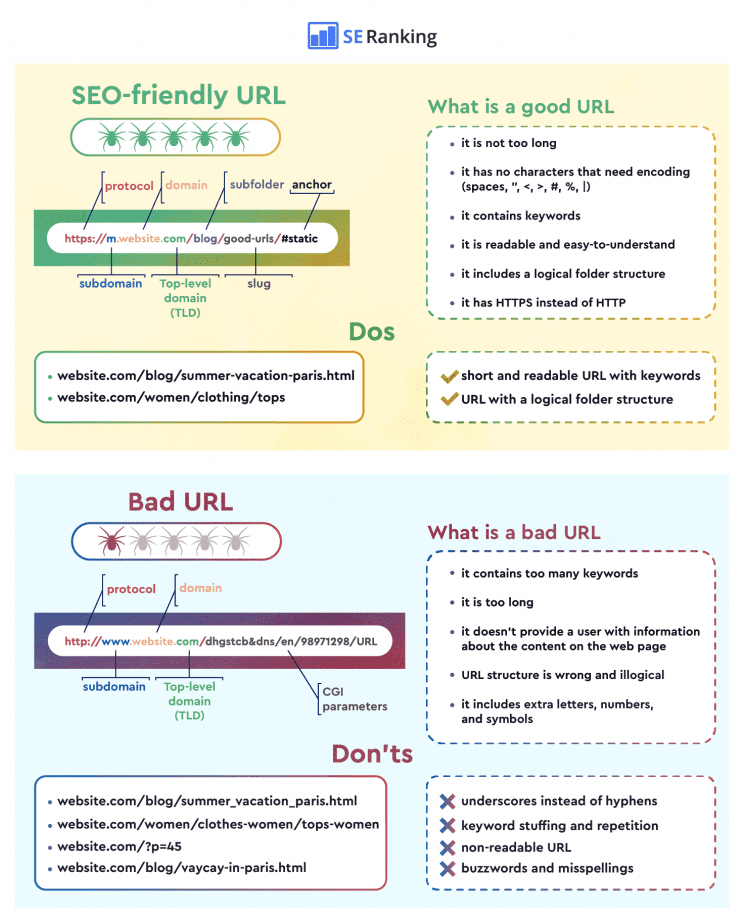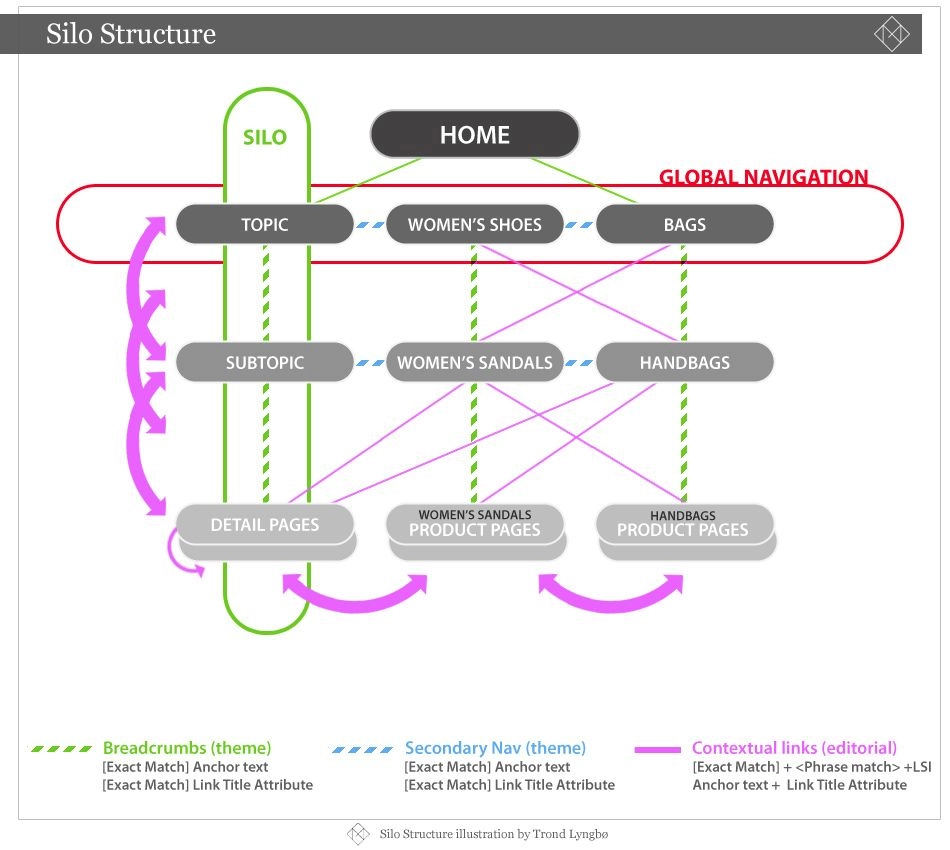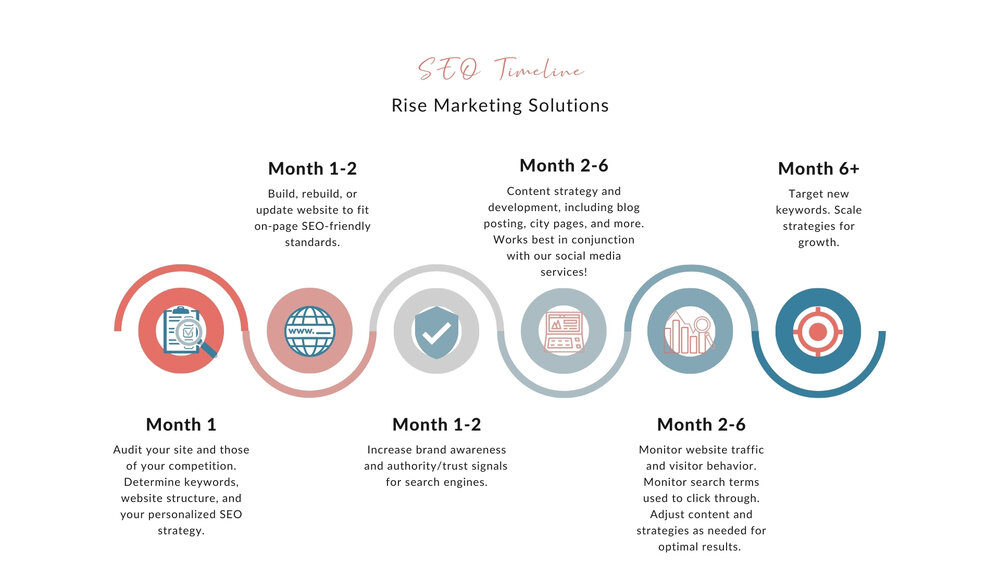Lovia Team uses an established and continuously improved SEO process that we learn from trusted and experienced SEO agencies and practitioners.
SEO Process Steps
- (Long Tail) Keyword Analysis
- Website Audit
- Landing Page Review
- Blog Setup and Integration
- Meta Element Optimization
- Hyperlink Optimization
- Blog Posting
- Link Building
- Web Page Content Optimization
- Reporting
Detailed Steps
Step 1: (Long Tail) Keyword Analysis
3 primary factors: Relevance, Competition, Search Volume
This is actually part of Step 0 (before the contract is deal).
Step Outputs (and tools used to generate it):
- Initiation phase:
- Keyword Table: List 3 cornerstone long tail keywords, 6 regular long tail keywords, and (optional) one broad/generic keyword (total 10 keywords). Each keyword may have variants/synonyms, that will be useful later during content writing. However, only the main keyword variant is used for reporting. Keyword slots must be numbered (by priority) to make them easily identifiable in Infinity tables, named longtail-01 to longtail-09, and generic-01 to generic-03.
Tool: Discussion with user + Infinity. - Setup Project: to get the monthly reports below and as the foundation for the next parts, we need to set up the project using SEO tools. Tool: SerpWatch (create new project).
- Keyword Table: List 3 cornerstone long tail keywords, 6 regular long tail keywords, and (optional) one broad/generic keyword (total 10 keywords). Each keyword may have variants/synonyms, that will be useful later during content writing. However, only the main keyword variant is used for reporting. Keyword slots must be numbered (by priority) to make them easily identifiable in Infinity tables, named longtail-01 to longtail-09, and generic-01 to generic-03.
- Monthly planning (including Initiation phase):
- Keywords Report: current state of keyword analysis for all 10 keywords listed in the Initiation phase. Tool: BrandOverflow’s Keyword Tool. Other tools: BrandOverflow Keyword Insights is not really useful, but it may uncover keyword variations.
- Monthly review: current state of keyword analysis at the last day of the month, to be compared with previous month
- Keywords Report: same as above.


Hendy emphasizes long tail here because generic/broad keywords are not only too competitive, but they tend to be “not worth it” / “less valuable”.
Generic, high competition keywords are NOT worth it…in many ways.
Rhett DeMille, PalmettoSoft
Step 2: Website Audit
Main elements of website audit:
- Technical SEO
- Website Structure
- On-Page SEO
- Website Content Review
- Competitors Website Analysis
- Analyze Design and UX (user experience)
Step 2.1: Technical SEO
Step 2.2: Website Structure
Step 2.3: On-Page SEO
Step 2.4: Website Content Review
Step 2.5: Competitors Website Analysis
Analyzing competitors can be valuable to provide insights (keywords we missed, good techniques we didn’t use, even bad techniques that we should avoid), and also to track performance.
- Initiation phase:
- Competitor Table. List 3 to 5 main competitors. The client usually provides this. But we can supplement that list, or verify, by doing keyword analysis for the cornerstone or even broad keywords.
- Ranked Organic Keywords. Tool: BrandOverflow Ranked Keywords. This lists what keywords the rank, and what pages. Usage quota of this tool is limited (4 per month). The main one should be for the client itself. Then pick one biggest competitor to see where they stand. You may uncover additional long tail keywords.
- Monthly planning

Step 2.6:Analyze Design and UX (user experience)
Step 3: Landing Page Review
Step 4: Blog Setup and Integration
Step 5: Meta Element Optimization
Slug:

10X Pillar pages vs Resource Pillar pages vs Cluster pages vs Landing pages:


Pillar pages vs Landing pages:
Unlike pillar pages, which aim to cover topics broadly, the strength of landing pages is their focus on a single objective. If you’re running social media advertising, for example, you can craft the page to perfectly match the intent of the ad that your visitors clicked on.
Source: HubSpot
Pillar pages are the opposite of landing pages in many ways. Their primary goal is not to convert visitors into potential customers, but to attract potential customers to your site. Great pillar pages often rank well on search engine result pages, attracting traffic to your site.
Source: Madison Marketing
Silo Structure:

Step 6: Hyperlink Optimization
Step 7: Blog Posting
Step 8: Link Building
Step 9: Web Page Content Optimization
Step 10: Reporting
Sources of Inspiration
PalmettoSoft’s 10 Step SEO Process

Rise Marketing’s SEO Timeline
